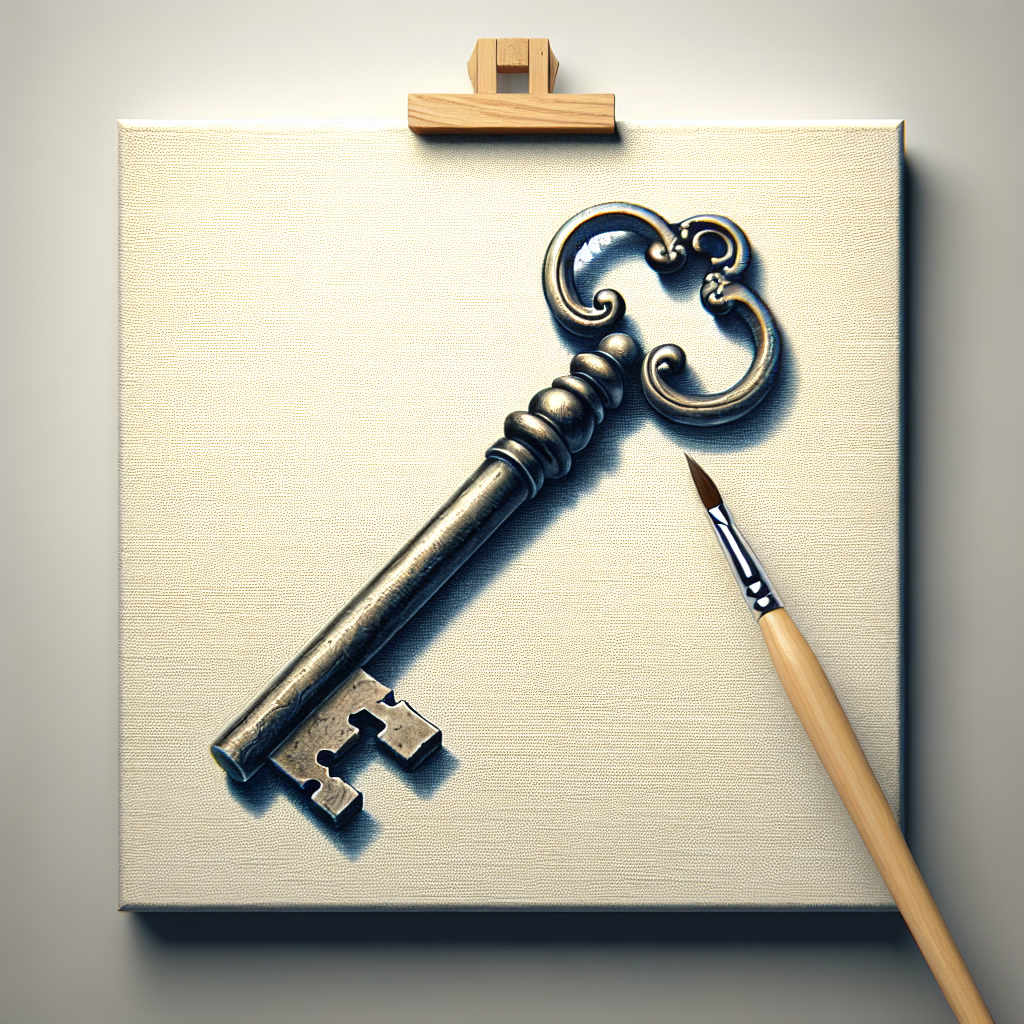So, you love puzzles and riddles, and you’re always on the hunt for a new brain-teasing challenge that will leave your friends amazed. But here’s the dilemma – how do you come up with fresh and one-of-a-kind ideas for these mind-boggling games? Well, fear not! In this article, we will explore some creative strategies that will help unleash your inner puzzle master and inspire you to create your very own unique and original puzzles or riddles that will keep everyone guessing. Get ready to engage your imagination and unlock the secrets to puzzle creation! Coming up with unique and original ideas for puzzles or riddles can be a fun and rewarding process. There are various brainstorming techniques that can help you tap into your creativity and come up with innovative concepts. By drawing inspiration from everyday life, exploring different concepts, creating unusual scenarios, finding inspiration online, getting feedback and collaborating with others, utilizing storytelling and themes, experimenting with different formats and difficulty levels, and continuously learning and improving, you can enhance your puzzle or riddle design skills and create captivating and intriguing challenges.

Brainstorming Techniques
Mind Mapping
Mind mapping is a powerful brainstorming technique that allows you to visually organize your thoughts and ideas. Start by writing down the main topic or concept in the center of a blank page. From there, branch out with related ideas, connecting them to the central topic. This technique helps you explore different angles and connections, leading to unique and original puzzle or riddle ideas.
Free Writing
Free writing involves setting a timer and writing continuously without judgment or restraint. The goal is to let your thoughts flow freely without worrying about grammar, structure, or coherency. This technique helps you bypass your inner critic and allows you to access your subconscious mind, where unique ideas may emerge. After free writing, review your notes and extract any elements that spark your interest for puzzle or riddle development.
Reverse Thinking
Reverse thinking involves challenging the traditional approach to problem-solving. Instead of starting with the question or puzzle statement, reverse it and ask yourself what the solution or answer could be. This technique can generate unexpected and original ideas. By considering the end result first, you may uncover unconventional ways to frame your puzzles or riddles and surprise your audience.
Association
Association involves connecting ideas based on similarities or relationships. Start with a central concept and explore different associations it brings to mind. For example, if your puzzle or riddle is about animals, think about related concepts such as habitats, characteristics, or behaviors. This technique helps you generate fresh ideas by expanding your range of associations and exploring different perspectives.
Combining Ideas
Combining ideas involves merging two or more unrelated concepts to create something new and unique. Look for elements in different domains that can be combined in interesting and unexpected ways. For example, you might combine elements of music and nature to create a puzzle or riddle that requires solving musical patterns to progress. This technique allows you to break free from conventional thinking and create puzzles or riddles that stand out.
Drawing Inspiration from Everyday Life
Observation
Observation is a powerful tool for finding inspiration. Pay close attention to the world around you and observe the people, objects, and situations you encounter. Notice the details, patterns, and peculiarities that catch your eye. By observing your surroundings with curiosity and an open mind, you can uncover unique puzzle or riddle ideas hidden in plain sight.
Patterns and Analogies
Patterns and analogies are useful sources of inspiration for designing puzzles or riddles. Look for recurring patterns in nature, mathematics, or everyday life and explore how they can be translated into puzzle elements. Analogies, such as comparing a complex problem to a maze, can also provide a framework for creating engaging challenges. By recognizing patterns and drawing analogies, you can create puzzles or riddles that are both logical and thought-provoking.
Common Objects and Activities
Everyday objects and activities can serve as inspiration for puzzles or riddles. Think about how ordinary items or tasks can be transformed into puzzling situations. For example, turning a familiar household item into a cryptic puzzle or transforming a routine activity into a brain-teasing challenge. By examining the ordinary through a puzzle or riddle lens, you can create puzzles or riddles that surprise and engage your audience.
History and Literature
History and literature offer a vast pool of inspiration for creating puzzles or riddles. Explore historical events, myths, or literary works, and identify key elements that can be incorporated into your designs. You can base your puzzles or riddles on historical mysteries, famous literary characters, or significant moments in time. By leveraging elements from history and literature, you can add depth and richness to your puzzles or riddles.
Exploring Different Concepts
Numbers and Mathematics
Numbers and mathematics provide a rich source of inspiration for puzzle or riddle design. Explore mathematical concepts such as patterns, sequences, and geometric shapes. Incorporate mathematical operations or equations into your puzzles or riddles to challenge your audience’s logical thinking. By infusing numbers and mathematics into your designs, you can create puzzles or riddles that exercise both mathematical prowess and problem-solving skills.
Language and Wordplay
Language and wordplay open up a world of possibilities for creating unique puzzles or riddles. Experiment with word associations, puns, homophones, anagrams, and other linguistic devices to create clever challenges. Consider incorporating language-related themes or constraints to add an extra layer of complexity to your puzzles or riddles. By playing with words and language, you can engage your audience’s linguistic abilities and make your puzzles or riddles truly memorable.
Logic and Reasoning
Logic and reasoning puzzles challenge your audience to think critically and analytically. Design puzzles that require deductive reasoning, logical thinking, and problem-solving skills. Use logical constraints, such as “if-then” statements or binary choices, to create structured challenges. By constructing puzzles or riddles that emphasize logic and reasoning, you can stimulate your audience’s cognitive abilities and provide a satisfying mental workout.
Optical Illusions
Optical illusions can be intriguing and captivating sources of inspiration for puzzle or riddle design. Explore visual patterns, illusions, and perceptual tricks that challenge the way we perceive the world. Use optical illusions as puzzle elements or incorporate them into the design of your riddles. By incorporating optical illusions, you can create puzzles or riddles that deceive and surprise the senses, creating a unique and immersive experience.

Creating Unusual Scenarios
Out of the Box Situations
Creating puzzles or riddles based on out of the box situations can spark creativity and captivate your audience. Think beyond conventional scenarios and explore unusual contexts. Set your puzzles or riddles in unexpected locations, periods of time, or even fictional worlds. By presenting puzzles or riddles in out of the box situations, you can challenge your audience’s imagination and create memorable experiences.
What If Scenarios
What if scenarios are a powerful tool for inspiration and creativity. Pose hypothetical questions and explore their ramifications. Consider how changing a single element in a situation can lead to unexpected outcomes. By exploring what if scenarios, you can create puzzles or riddles that encourage your audience to think outside the box and envision alternative possibilities.
Imagination and Fantasy
Imagination and fantasy open up endless possibilities for creating puzzles or riddles. Let your imagination run wild and create challenges that transport your audience to fantastical realms or scenarios. Incorporate mythical creatures, magical elements, or supernatural phenomena into your puzzle or riddle designs. By tapping into the realms of imagination and fantasy, you can create puzzles or riddles that ignite the imagination and evoke a sense of wonder.
Cultural References
Cultural references can provide a rich tapestry of inspiration for puzzle or riddle design. Draw from folklore, traditions, or iconic symbols associated with different cultures. Incorporate elements from literature, art, or music into your puzzles. By using cultural references, you can create puzzles or riddles that resonate with diverse audiences and enrich the overall experience.
Finding Inspiration Online
Puzzle and Riddle Websites
Puzzle and riddle websites are treasure troves of inspiration and resources for aspiring puzzle or riddle designers. Explore websites dedicated to puzzles and riddles and study the different types of challenges they offer. Engage with the online puzzle and riddle community, share your ideas, and gather feedback. By immersing yourself in puzzle and riddle websites, you can expand your knowledge and find inspiration to fuel your own designs.
Social Media and Forums
Social media platforms and forums provide opportunities to connect with puzzle enthusiasts and designers from around the world. Join online communities dedicated to puzzles or riddles and participate in discussions. Share your ideas, seek feedback, and learn from others. By engaging with the puzzle and riddle community on social media and forums, you can tap into a vast network of knowledge, inspiration, and collaborative opportunities.
Blogs and YouTube Channels
Blogs and YouTube channels dedicated to puzzles or riddles offer valuable insights and inspiration. Follow blogs or subscribe to YouTube channels that focus on puzzle or riddle design. Learn from experienced designers, listen to their tips and tricks, and gain valuable insights into the creative process. By accessing blogs and YouTube channels, you can stay updated on the latest trends, discover innovative techniques, and expand your puzzle or riddle design skills.
Getting Feedback and Collaborating
Testing Ideas with Friends or Family
Testing your puzzle or riddle ideas with friends or family can provide valuable feedback and fresh perspectives. Share your designs with trusted individuals who are willing to engage in the solving process. Observe their reactions, gather feedback on the clarity, difficulty, and enjoyment of your designs, and incorporate their suggestions into your revisions. By involving friends or family in the design process, you can refine your puzzles or riddles and ensure they are engaging and enjoyable for future solvers.
Joining Puzzle and Riddle Communities
Joining puzzle and riddle communities, both online and offline, can provide opportunities for collaboration and learning. Participate in workshops, meetups, or online forums where puzzle or riddle designers gather. Share your designs, receive feedback, and collaborate with other enthusiasts to create puzzles or riddles together. By joining puzzle and riddle communities, you can tap into a vibrant network of fellow designers, exchange ideas, and continuously learn and improve your craft.
Using Storytelling and Themes
Building Narrative Arcs
Integrating storytelling elements into your puzzles or riddles can enhance the overall experience for solvers. Create puzzles or riddles with a narrative arc that engages and immerses the solver in a captivating story. Start by establishing a clear setting or context, introduce elements of conflict or mystery, and provide resolutions as the puzzle or riddle unfolds. By building narrative arcs, you can create puzzles or riddles that not only challenge the mind but also evoke emotions and create a sense of adventure.
Applying Themes and Settings
Applying themes and settings to your puzzles or riddles can provide coherence and depth. Choose themes that resonate with your target audience and incorporate them into your designs. Explore different settings, such as historical eras, fantasy worlds, or futuristic landscapes, to set the stage for your puzzles or riddles. By applying themes and settings, you can create puzzles or riddles that are immersive, memorable, and resonate with the solver’s imagination.
Creating Characters and Plot Twists
Introducing characters and plot twists into your puzzles or riddles adds intrigue and complexity. Develop characters with unique traits or motivations that drive the solving process. Incorporate plot twists that challenge the solver’s assumptions and expectations. By creating characters and plot twists, you can create puzzles or riddles that go beyond mere problem-solving and offer a rich storytelling experience.
Utilizing Different Formats and Mediums
Visual Puzzles
Visual puzzles rely on images, patterns, or visual cues to challenge the solver. Explore different visual formats, such as mazes, optical illusions, or picture-based puzzles. Experiment with visual elements to convey information or hide clues within the design. By utilizing visual puzzles, you can engage the solver’s visual perception and provide a unique solving experience.
Audio or Music-based Riddles
Audio or music-based riddles rely on sound, music, or spoken clues to engage the solver. Incorporate sound effects, musical patterns, or carefully crafted spoken hints into your designs. Consider using different musical genres or instruments to add variety and challenge to your puzzles or riddles. By utilizing audio or music-based riddles, you can create unique experiences that appeal to the auditory senses.
Interactive or Digital Formats
Interactive or digital formats offer endless possibilities for creativity and engagement. Design puzzles or riddles that utilize interactive elements, such as clickable objects, drag-and-drop functionalities, or hidden layers of information. Explore digital platforms and tools that allow for dynamic and interactive experiences. By utilizing interactive or digital formats, you can create puzzles or riddles that leverage technology to provide immersive and captivating solving experiences.
Multi-step Puzzles
Multi-step puzzles are puzzles that require multiple levels of solving or completion. Design puzzles or riddles that consist of interconnected challenges or stages. Each step unlocks a new clue or requires a different solving technique. By creating multi-step puzzles, you can provide a sense of progression and accomplishment for solvers as they navigate through layers of complexity towards the final solution.
Experimenting with Different Difficulty Levels
Creating Easy Puzzles for Beginners
Creating puzzles or riddles for beginners is an important aspect of puzzle design. Introduce newcomers to the world of puzzles with simple challenges that gradually increase in complexity. Focus on providing clear instructions and clues to guide beginners through the solving process. By creating easy puzzles or riddles, you can foster a sense of accomplishment and encourage newcomers to explore further.
Designing Moderate Challenges
Designing moderate challenges involves striking a balance between difficulty and solvability. Create puzzles or riddles that require logical thinking, deduction, or creative problem-solving skills. Provide enough complexity to engage experienced solvers while ensuring that the challenge is within reach. By designing moderate challenges, you can cater to a wider audience and offer puzzles or riddles that are enjoyable yet thought-provoking.
Crafting Difficult Riddles for Experts
Crafting difficult riddles is an exciting endeavor that challenges even the most experienced solvers. Create riddles that push the boundaries of problem-solving and require expertise in various domains. Incorporate intricate wordplay, advanced mathematical concepts, or obscure references to challenge the solver’s knowledge and creativity. By crafting difficult riddles, you can provide a satisfying experience for expert solvers looking for a true mental challenge.
Continuous Learning and Improvement
Analyzing Existing Puzzles and Riddles
Analyzing existing puzzles or riddles is a valuable learning tool for puzzle designers. Study a wide range of puzzles or riddles from different sources and genres. Examine their structures, themes, solving techniques, and audience reactions. Identify what makes a puzzle or riddle captivating and unique, and apply those principles to your own designs. By analyzing existing puzzles or riddles, you can gain insights into effective design strategies and enhance your own creative process.
Studying Puzzle Design Principles
Studying puzzle design principles provides a foundation for creating engaging and effective challenges. Explore books, articles, or online resources that delve into the theory and practice of puzzle design. Learn about different puzzle types, design principles, and solving techniques. By studying puzzle design principles, you can acquire a deeper understanding of what makes puzzles or riddles engaging and incorporate those principles into your own designs.
Iterating on Feedback and Critiques
Seeking feedback and critiques on your puzzle or riddle designs is essential for growth and improvement. Share your designs with fellow puzzle enthusiasts, designers, or mentors and actively listen to their feedback. Embrace constructive criticism, learn from it, and implement necessary revisions. By iterating on feedback and critiques, you can refine your skills, enhance the quality of your puzzles or riddles, and create designs that captivate and engage solvers.
In conclusion, coming up with unique and original ideas for puzzles or riddles involves utilizing various brainstorming techniques, drawing inspiration from everyday life, exploring different concepts, creating unusual scenarios, finding inspiration online, getting feedback and collaborating with others, utilizing storytelling and themes, experimenting with different formats and difficulty levels, and continuously learning and improving. By applying these strategies, you can enhance your puzzle or riddle design skills and create captivating and intriguing challenges that entertain and engage your audience. So go ahead, let your creativity roam free, and embark on the exciting journey of designing unique and original puzzles or riddles.
